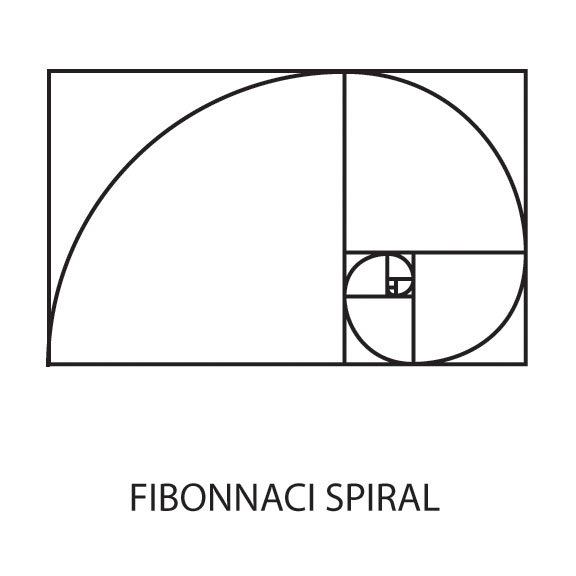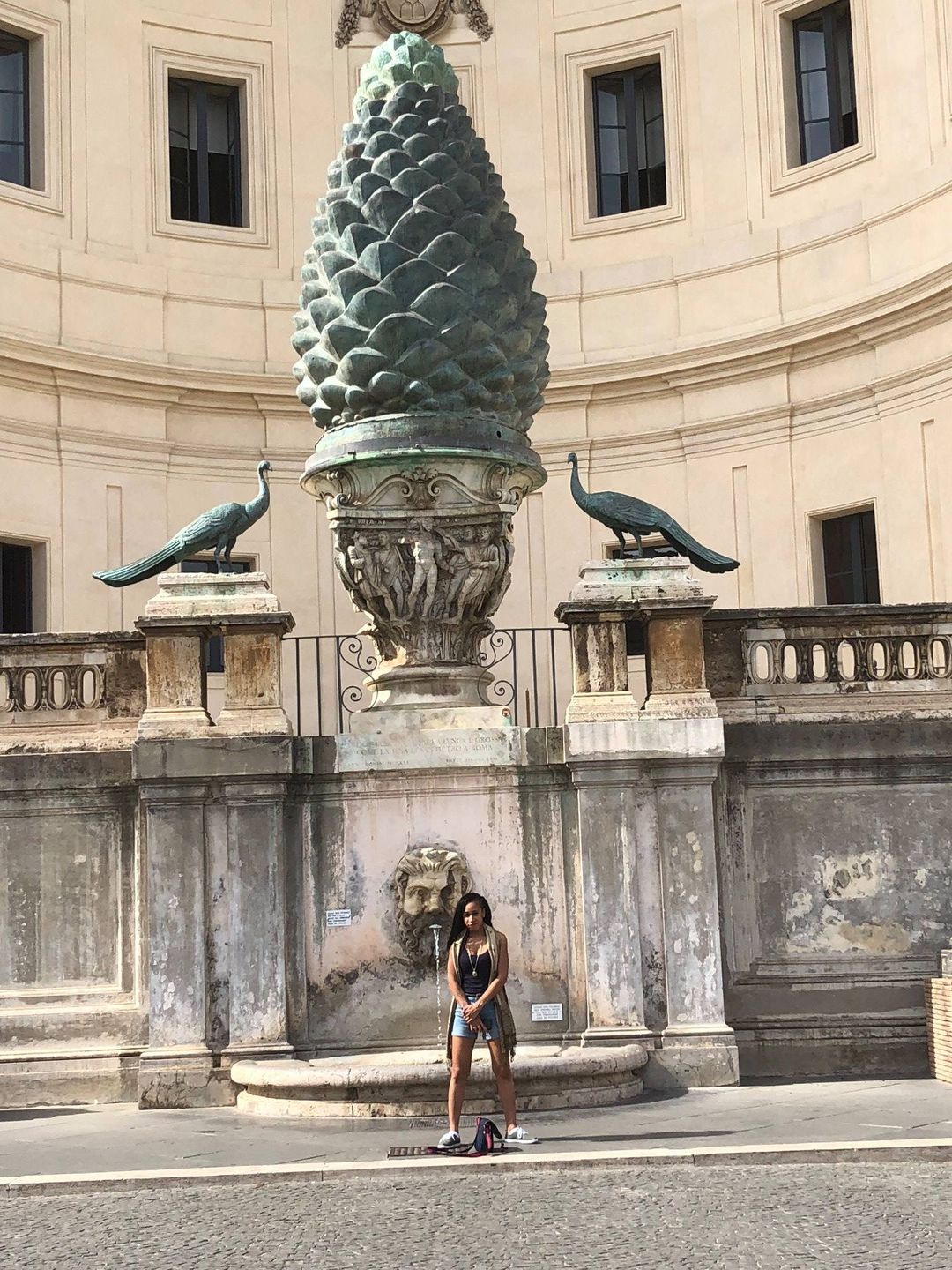| Fibonacci spiral | 
| Fibonacci spiral |
Sympsionics Symbol | ||
Spiral or vortex whose radius expands (or contracts) by 3 parts on the Y axis and 5 parts on the X axis; the ratio 3:5 remaining constant.

Fibonacci Numbers Pine Cone and Vatican
Fibonacci discovered a series of numbers that seemed to have magical predictive powers. The formula is extremely simple. Start with zero, add the next number, and you have the next number in the series. Continue the progression and you get 0,1,1,2,3,5,8,13,21,34,55.... and so on. Not surprisingly, the sequence became known as the Fibonacci Sequence or Fibonacci Ratios.
The great thing about this series is that if you divide any number in it by the next one, you get a product that has become known as the “Golden Ratio.” This number is 1:1.618, or 0.618 to one. Fibonacci’s original application for this number was that it could be used to predict the growth rate of a population of breeding rabbits. I guess that was a valuable skill back then.
Pine cones themselves being the seed of pine trees, exhibit the Fibonacci sequence when looked at from the bottom, exhibiting sacred geometry.
The pineal gland is a raisin sized, pine cone (hence the name) shaped gland located between the eyes and in the center of your brain.
The symbol of the pineal gland is the pine cone. It is so revered by the Vatican that a special Vatican court was built called the Court of the Pine Cone where the worlds largest pineal gland symbol is on display! The symbol is also found on the Egyptian god Osiris.
Renee Descartes called the pineal gland “the seat of consciousness” and it is the gateway to spirituality; being, higher realms of consciousness and tuning into higher frequencies beyond those available through the 5 senses. By awakening the pineal gland, we can speed up our learning and our memory, enhance wisdom, intuition and creativity, and even awaken our psychic abilities.
Next to the Vatican Museums is a large courtyard designed by Bramante, called the Courtyard of the Pine because of the enormous bronze pine cone situated in it. It isn't a statue. Apparently it dates from around the 1st century BC and was likely to have been used as a fountain in the baths of Agrippa which stood just behind the Pantheon. It was moved in the early Middle Ages and placed in front of the original Basilica of St. Peter built by the Emperor Constantine where it was used as a fountain. The bronze pine cone is one of only a handful of spolis preserved from the original St. Peter's.
The colossal bronze pine cone was cast in the 1st or 2nd century by Publius Cincius Salvius who left his name on the base. This was way before the Catholic Church was given the property upon which Vatican City sits. There is much pre-Christian and non-Christian art in the Vatican and its museums. [anon]
See Also
12.19 - Fibonacci Relationships
12.21 - Fibonacci Whole Numbers v Irrational Decimal near Equivalents
3.04 - Power Accumulation via Fibonacci-like Patterns
Fibonacci Relationships
Fibonacci Series
Figure 12.12 - Russells Multiple Octave Waves as Fibonacci Spirals
Golden Mean
Inverse Square Law
PHI
Pineal
Square Law
Sympsionics
